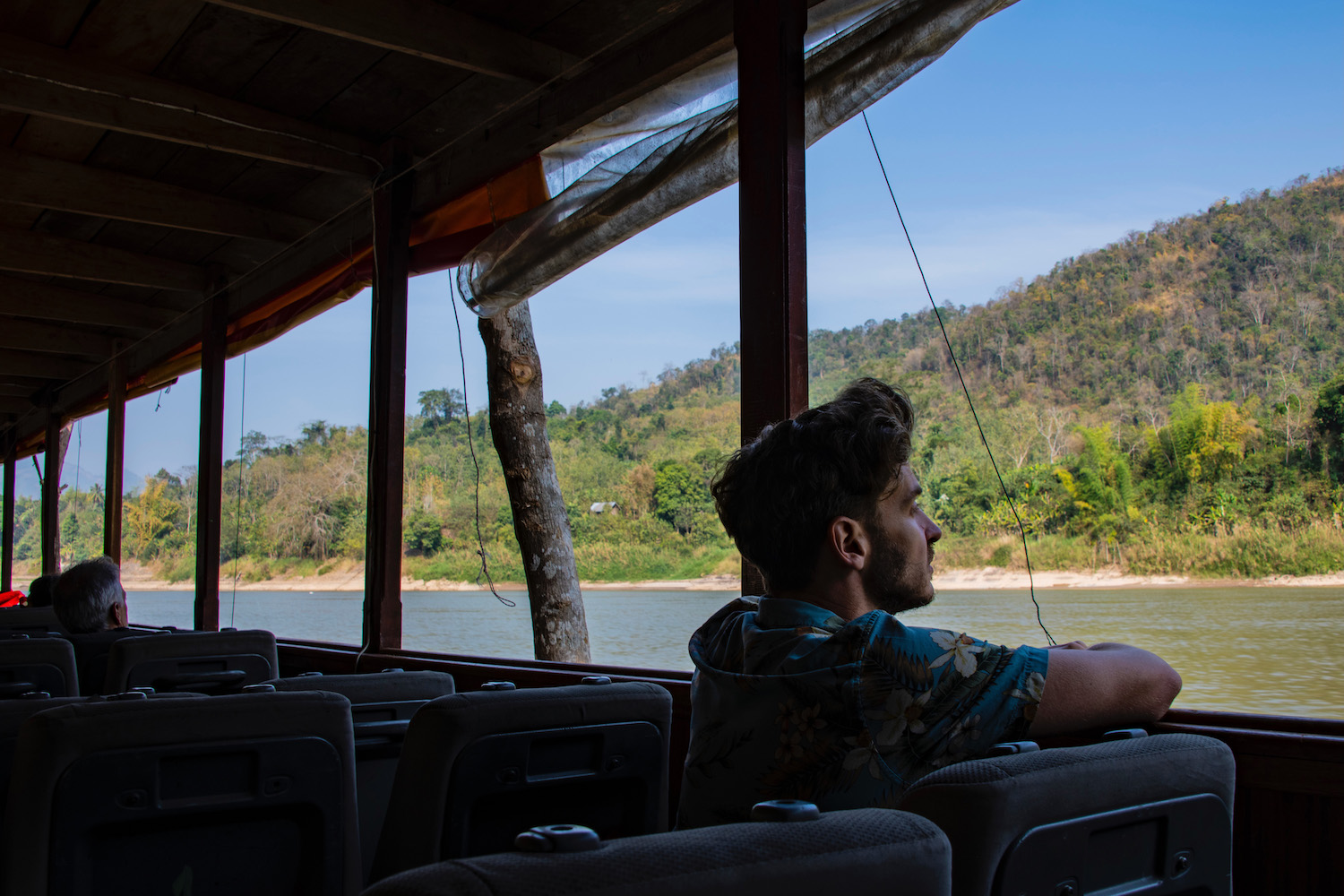I asked myself a lot of questions on Tuesday morning.
Do I have time to get coffee and a croissant? I looked at my phone and it was 6; the receptionist the night before had told me the truck would pick me up by 6:30. I walked down to the French bakery to find they had imported not only European breads and pastries, but also a lack of timeliness. My ride, for its part, arrived sometimes after 7. My stomach rumbled as I boarded.
Am I underdressed? I had on a loose-fitting (for me) short-sleeve button down over last summer’s too-short shorts, and Havaianas flip-flops to finish. On the other hand, the breeze blowing through the back of the songthaew made it seem much colder than it was; the sun would be fully risen soon.
Can I get something to eat now? The driver had told us we would be departing at 8:30, although he handed us a piece of paper with “7:30” scrawled on it; as I waited in line behind some other travelers at a local shop to buy a bag of sad-looking baguettes, he rushed all of us toward the pier, which required a descent down two dozen shoddy-looking concrete steps.
What on earth was I thinking? Within moments of boarding the vessel—which, to be sure, did end up leaving at half past eight on the dot—I began to doubt my decision to have traveled back to Thailand this way. It was filthy and cramped; the seats were upholstered (and moldy) and had clearly been harvested from old cars; although both tourists and locals were polite and courteous, a group of mainland Chinese (laborers, I assumed, in country to pillage its resources) were screaming at one another so loudly I almost couldn’t hear the music videos blaring through their knock-off mobile phones.
Is it too late to change my mind? I frantically browsed flight options—there was one from Luang Prabang to Don Mueang for the same price I’d paid on the way up. But alas, we started moving.
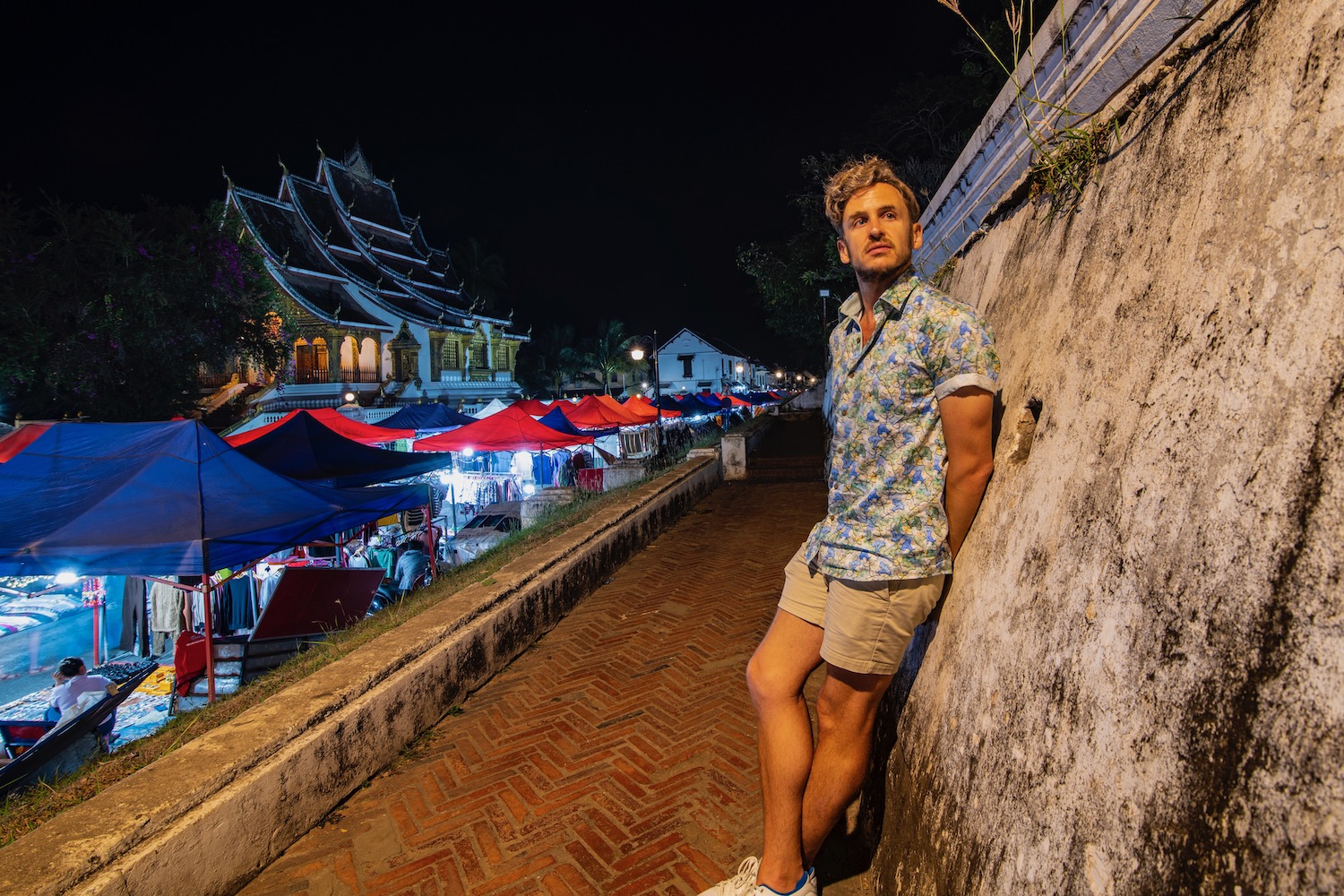
On the way up to Laos from Thailand, the plane had malfunctioned moments before we were scheduled to push back; it appeared we might not make it off the ground.
Another question. Maybe I should just stay here?
When it landed in Luang Prabang after we got the all clear in Bangkok, to be sure, I felt less than excited. Although I was traveling during the dry season, the bend in the Mekong the city sat along was shrouded in a thick blanket of condensation. In addition to a late arrival, there was also a massive queue for visas, after which I had to join an entirely separate queue for northern immigration.
And the other hand, there was a silver lining to the plentiful clouds overhead. It didn’t matter that sunset was mere minutes away by the time I got checked-in and freshened up; there wasn’t going to be a sunset. Indeed, the main destination I’d wanted to photograph that evening (the city’s famous night market, the only specific place I remembered from my trip 14 years prior) was…well, only open after nightfall.
As I stood on the bottom tier of Phou Si Hill setting up my tripod, I tried to assemble a clearer memory of my previous visit, which had occurred literally weeks after I took the leap of faith that inspired me to start my first travel blog. Where did I stay back then?
I knew I’d been traveling with Kale and Amber, a couple from Arkansas who had also been teaching English in a Chinese-speaking country; we had arrived around this same time of day, albeit after a two-day overland journey from Vietnam, rather than a short flight.
Kale wants to save money, Amber had told me, only once and without emotion. I suspected she might’ve agreed to have flown from Hanoi if I had pressed the issue. The journey had been uncomfortable, even in my resilient 25-year-old body; Laos had been under profound construction, to the extent that I’m surprised it appears to be exactly as poor now as it was then.
But apart from that? No, I remembered nothing. Well, except for the fact that the city’s famous “fruit shakes” had given me what was, at the time, my worse case of food poisoning ever.
“No,” I smiled, shook my head and waved my hand at each of the young women who offered me one as I made my way back to my hotel at the end of the night.
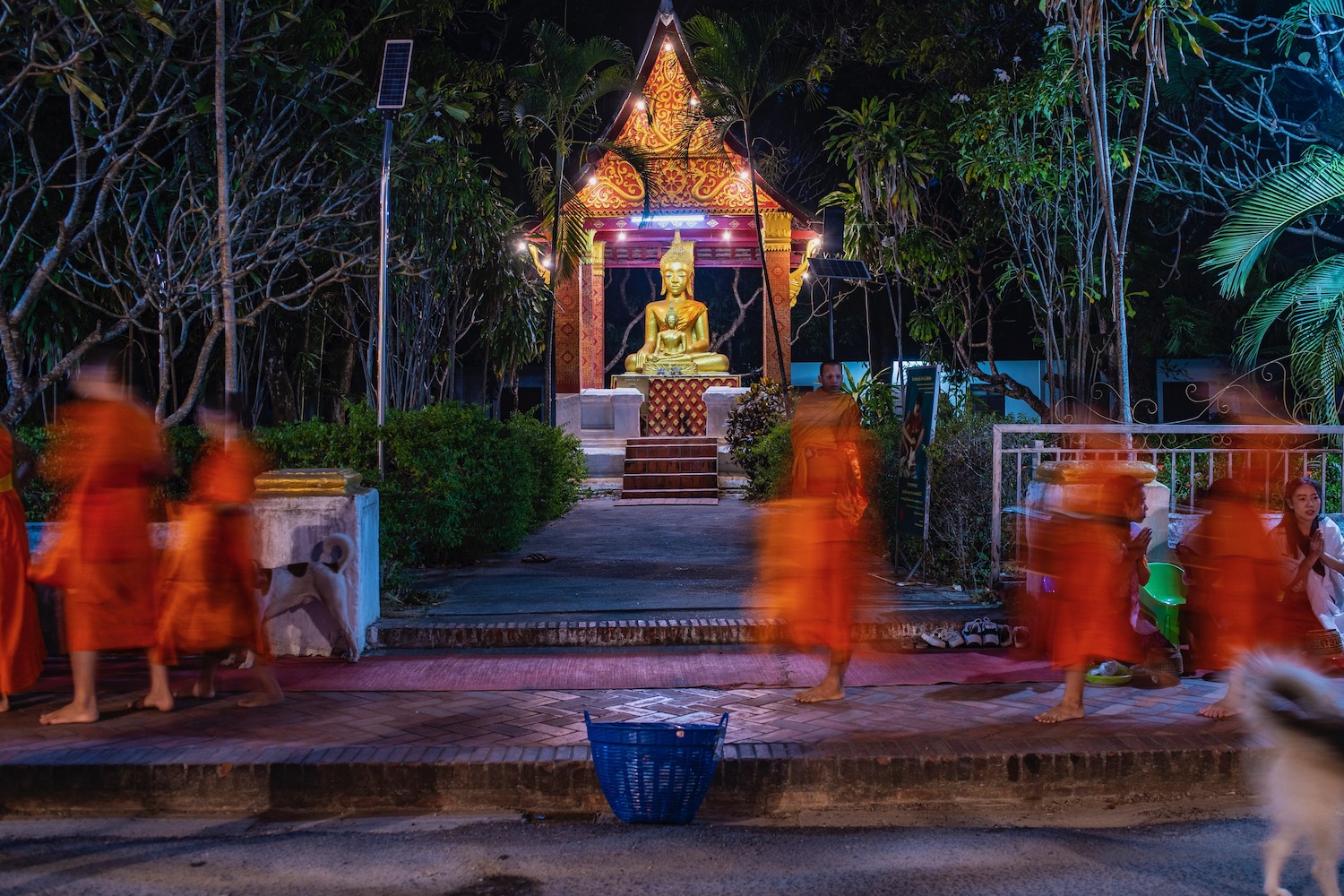
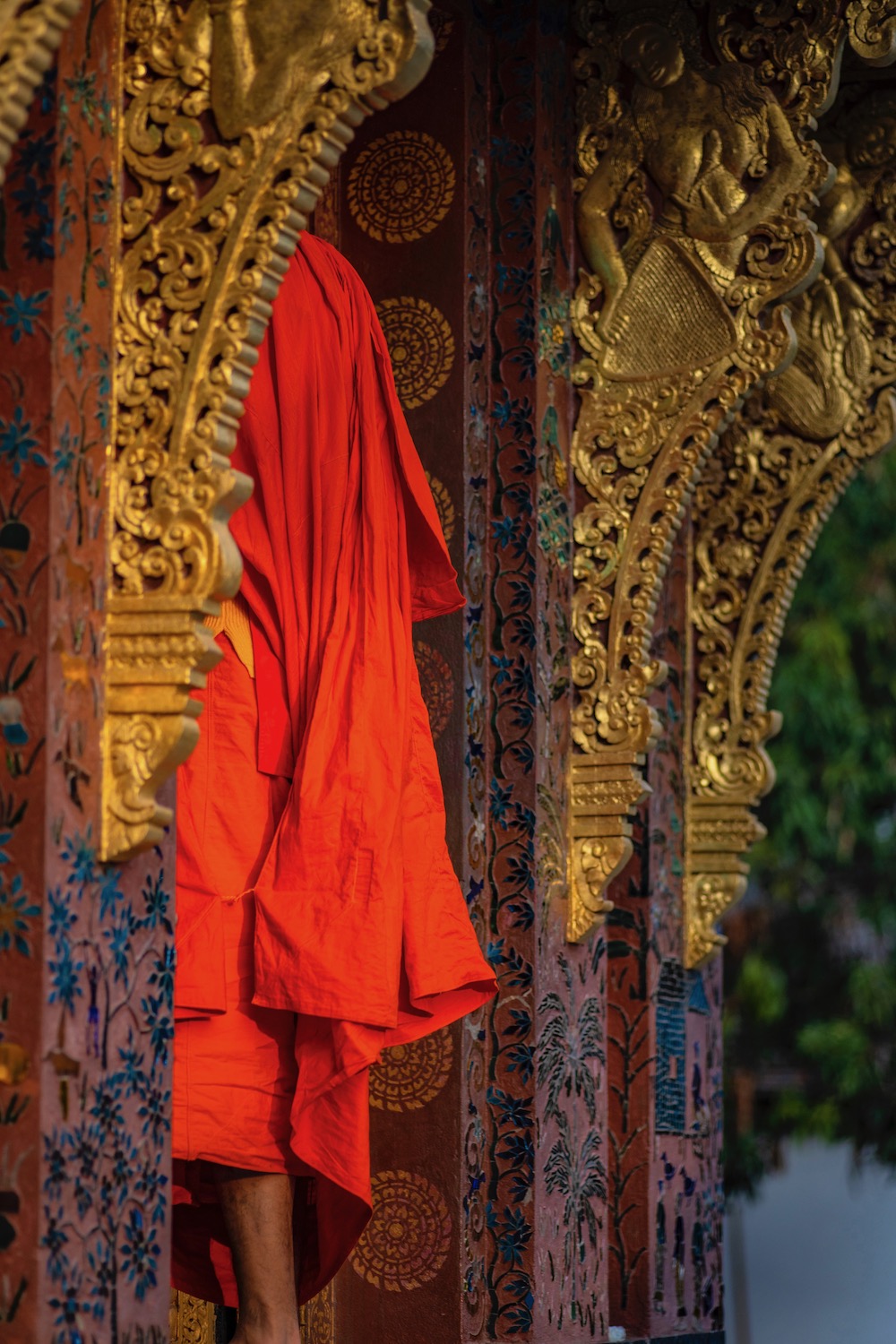
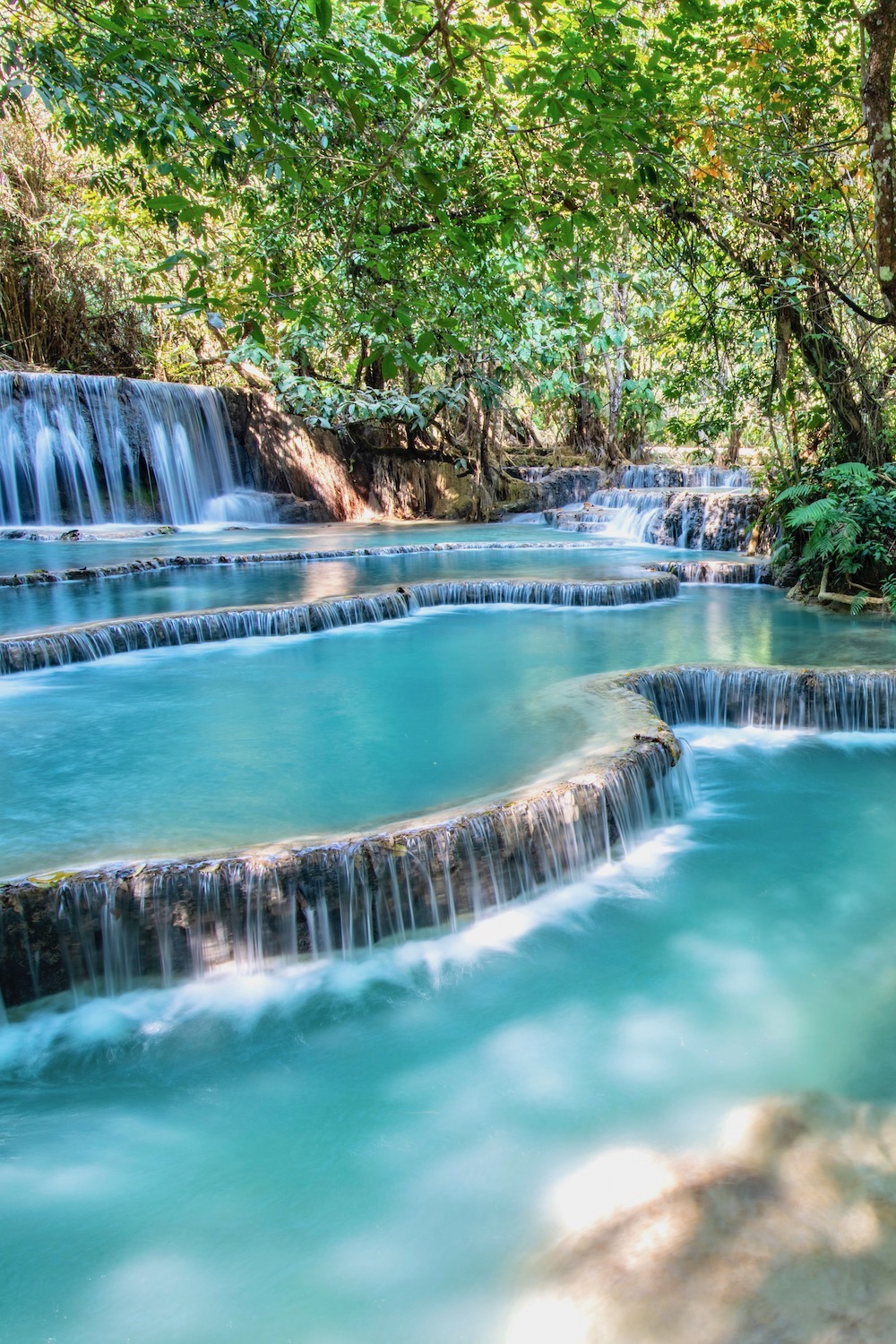
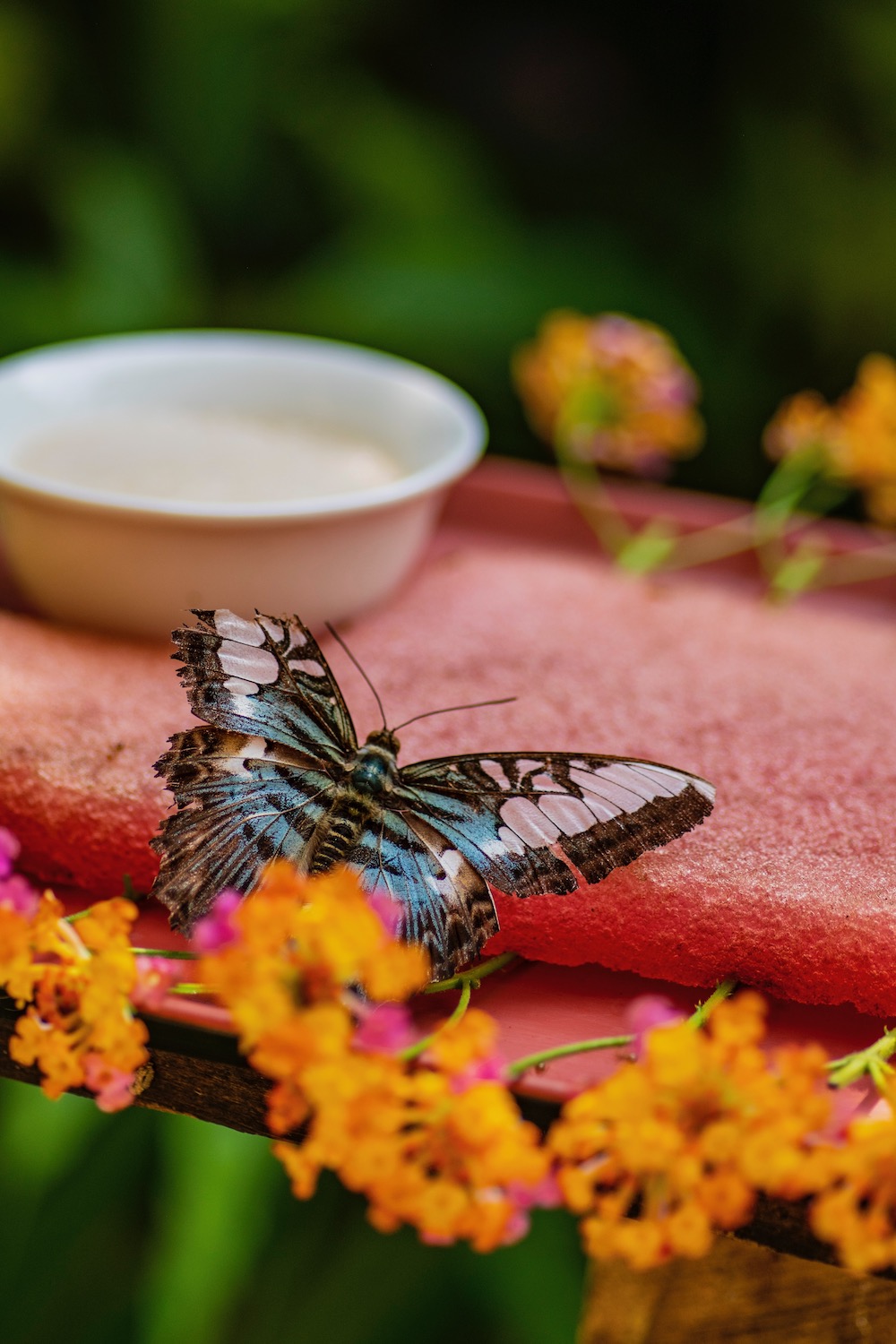
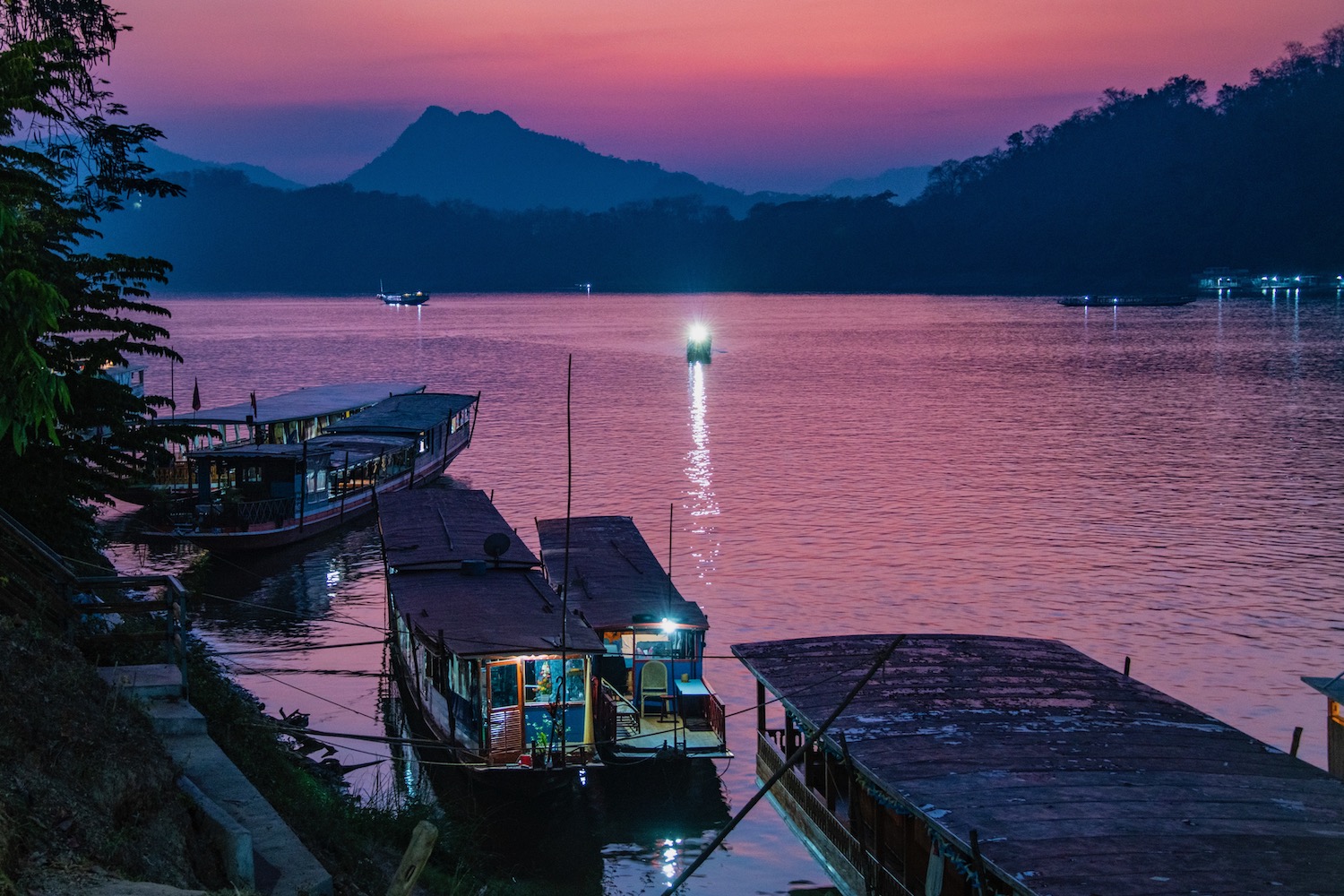
Watching the alms ceremony the next morning hammered home how little I had retained from my previous few days in Luang Prabang. I remembered literally nothing about the procession, though I’ve told myself all these years that I watched it. As I walked down Sakkaline Road past Wat Sensoukharam, I wondered whether I had just lied to myself about how substantive those few days had been.
“Rice for the monks?” A woman asked me as I walked slowly along, trying to envision how the procession might unfold. I simply smiled at her and pulled my camera out; she smiled back, clearly having understood. It was still so dark I could see stars; hadn’t it been light last time? At least the stars meant it wouldn’t be cloudy today.
Before I had a chance to dwell too much on it, I noticed out of the farthest right corner of my eye flashes of orange, which was a vivid shade in spite of only the slightest bit of light having come over the horizon. The monks had started walking.
I initially tried to photograph them using my 100mm lens, wide open, at f/2.8; even at ISO 640 it was too dark to capture them crisply. I then decided to switch to my 35mm, but instead capturing long exposures—I liked the idea of tangerine smoke snaking beneath the temple—assisted by remote. The idea was that by the time I took a few of these shots, there might be enough light to capture closer, clearer images.
This was indeed the way it ended up going down, though the entire experience passed so quickly that by the time I finally finished getting the shots I wanted, even the last straggler monks had disappeared from sight. I sat down at the bakery (the one I wouldn’t end up being able to visit the following day, as I waited to be taken to the slow boat). I felt as if I had just gotten out of church.
I also felt like I’d enjoyed an entire day’s worth of experiences, even though it was barely 7 AM. In fact, I had three more big items on my list: Fully ascending Phou Si Hill; visiting Kuang Si Waterfall and its famous butterfly garden; and crossing the Mekong to climb up one of the temples on the north bank, which I hoped would offer a full view of Luang Prabang.
Phou Si, which I was sure I had never truly scaled after making it up the third of six staircases and past the dramatic Naga statue, was disappointing. The trees immediately beneath the summit were so overgrown that there weren’t really any good views to be had at all. There was a second Naga statue and half a dozen Buddha images on the path down; I found all these more interesting than any semblance of panorama.
“It was nice,” I explained to the receptionist at the butterfly garden, when he asked me what I had thought of Kuang Si, “but pretty similar to many other Southeast Asian waterfalls I’ve seen.” He nodded, and proceeded with trying to upsell me into a ticket package that included a slice of apple pie his family (he was Dutch) had made fresh that day.
I also tried to tell him how much I’d loved butterflies as a child and how genuinely excited I was to visit the garden, though he mostly brushed that off, too.
I imagined them fluttering around me as I walked up the crumbling staircase that led to Wat Chompet, whose viewpoint was at least as overgrown as the one at Phou Si had been. Which is not to say I couldn’t see anything—it was really just the river itself that was obscured—but I did wonder if the journey had been worth it.
(Thankfully, the husband of the woman who had told me the 20,000 kip ticket to the temple had his own boat, which means that I was able to get back across the river without walking the 2 km back to the main pier.)
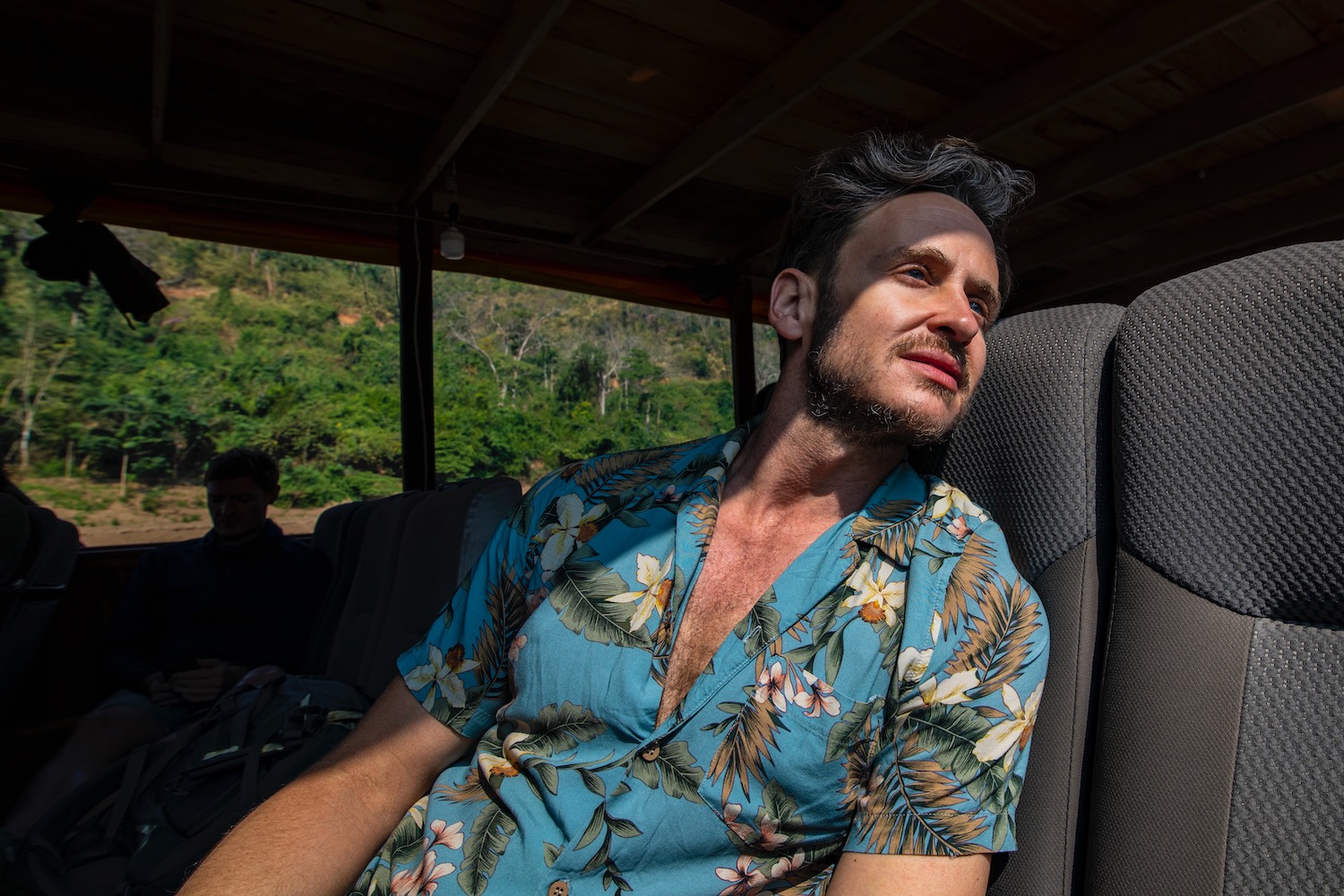
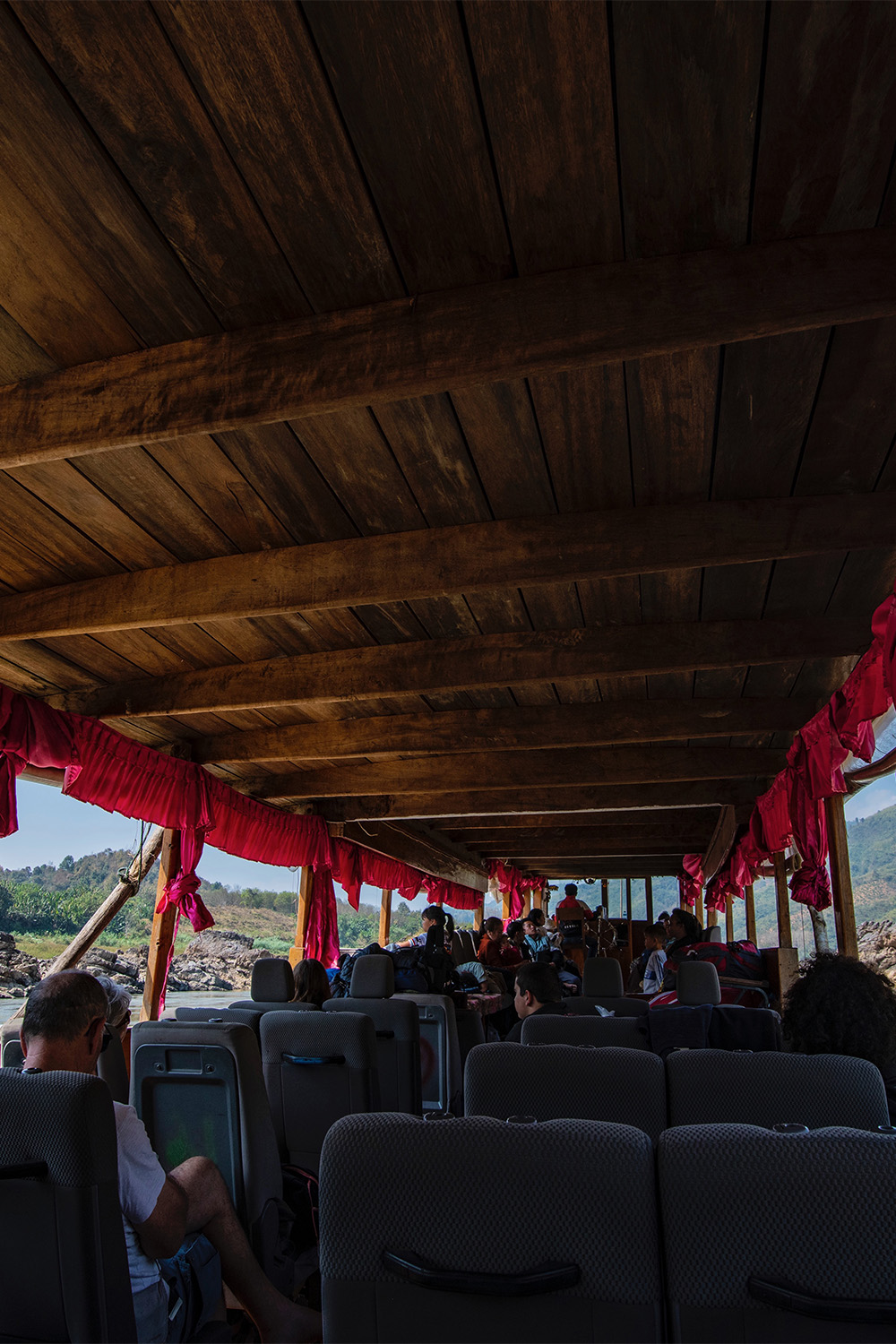
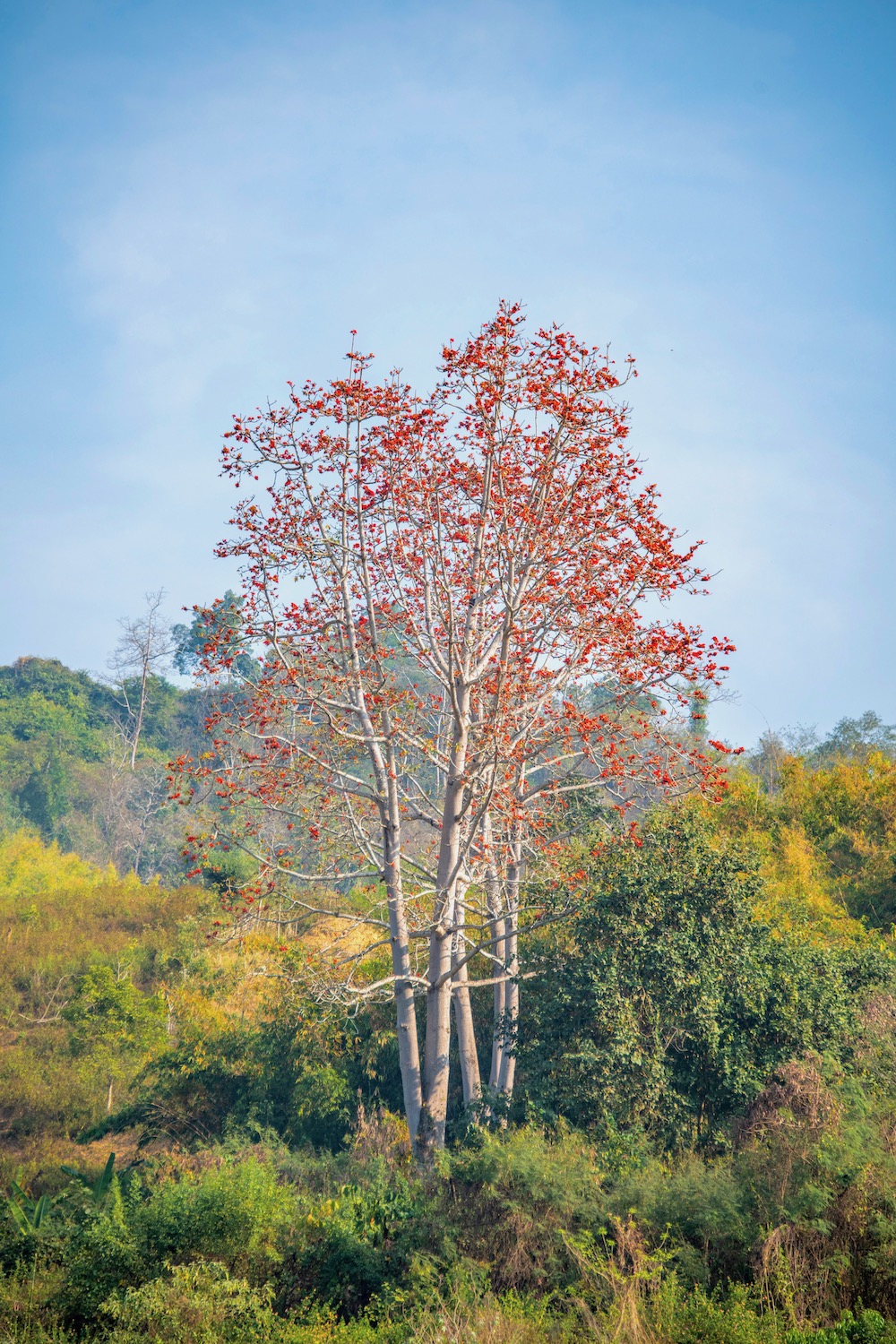
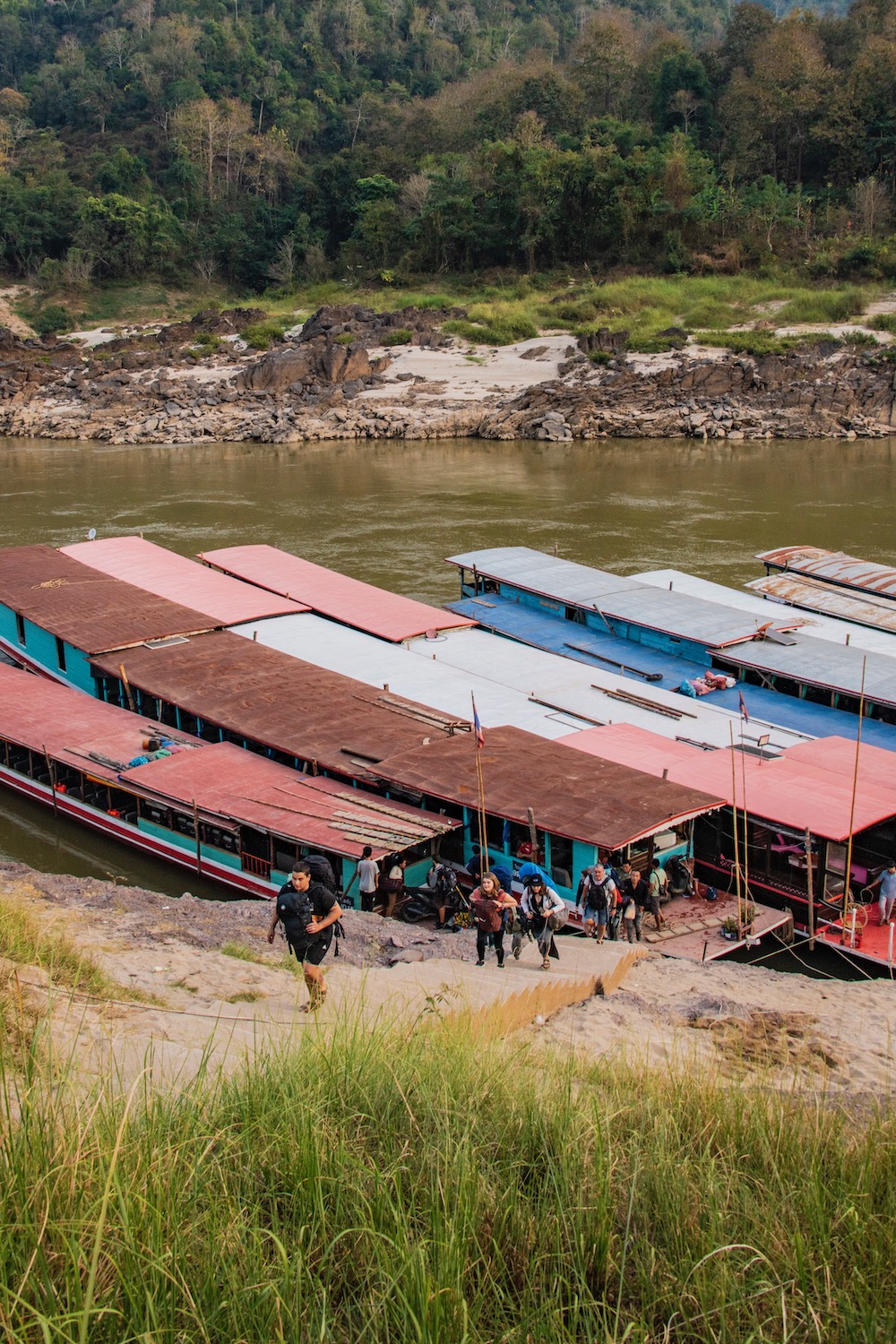
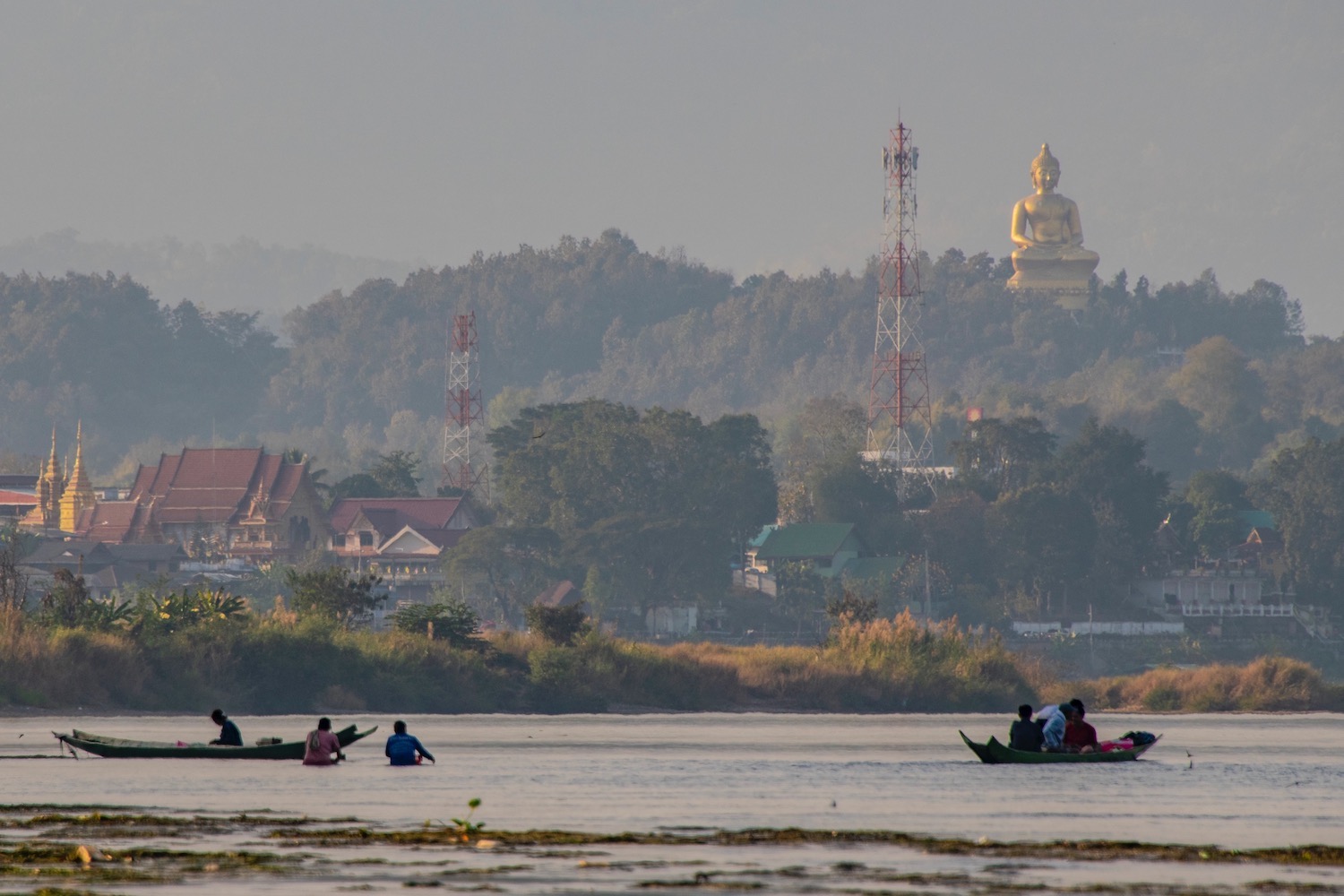
Like my days in Luang Prabang themselves, the slow boat—once it got going—was relatively smooth sailing. Eventually, the Chinese laborers fell asleep; the sun got so hot and so high in the sky it seemed ludicrous to think that I had ever been cold.
I’m not sure if it was solely the glide of the old wooden thing atop the surface of the muddy Mekong, or perhaps the two large Beerlao I’d downed, but the journey to Pak Beng passed quickly. It was peaceful, sublime even. I’d lie and say I hadn’t wanted it to end, but I was the first person to stand when we docked, and the first foreigner off the boat.
“I wanted to make sure I did this before I can’t anymore,” said a Brit named Mitch, just after we set off on the second day. We’d lucked into a nicer boat, one the Chinese laborers did not end up boarding.
I asked him to clarify what he meant. He seemed to be the same age as me; did he mean that middle-aged people like us would soon be unable to travel in such a spartan way? Was he planning to start a family, or a career with less time off?
“The dams,” he explained. “You know, the controversial hydroelectric ones. They’re coming online soon; soon, this will all be flooded. I’m guessing the slow boats will stop running then.”
Suddenly, looking back at the cynicism I’d been mired in the previous morning, I felt almost ashamed. Here I was with an opportunity that might not even be on the table a year from now, and the only emotion I could manage to stand in was annoyance; the only perspective I could manage to see from was entitlement.
I had certainly not been like that back in 2010.
Mitch, who told me very shortly after we started speaking that he was not on any social media, was not the only person I ended up connecting with that day. There was Simone and Ali (both from Switzerland; the German and French parts respectively), and a ravishing Cantabrian whose name I actually didn’t get. He gave it to me; I was just too tired to hear it, and too proud to ask him to repeat it.
I did give Simone and the Spaniard my website names, although I didn’t force the issues of exchanging Instagram accounts, and certainly not adding one another on Facebook, as would’ve been the only option 14 years earlier. To be sure, while I am still connected with Kale and Amber (who are no longer together), our eternal digital bond is a superfluous one. None of us have spoken in years.
After having crossed the border with this year’s friends, we jammed into a death-trap share van, which sped us toward Chiang Rai in far less time than Google Maps told us would be required. In a way it was liberating, the brevity and coldness of our goodbye at the #1 Bus Station. While I assumed at least one of them would use at least one of my blogs for advice, none of us tried to pretend would we ever meet again, or even go out of our way to get in touch. It was just well-wishes and quick hugs.
I thought, for a moment, that I might write Kale and/or Amber to tell him and/or her about this experience. I had remembered, at some point, that we had discussed doing it together, way back then, before I succumbed to my aforementioned sickness.
No, I smiled to myself, and walked off into the darkness toward my hotel.
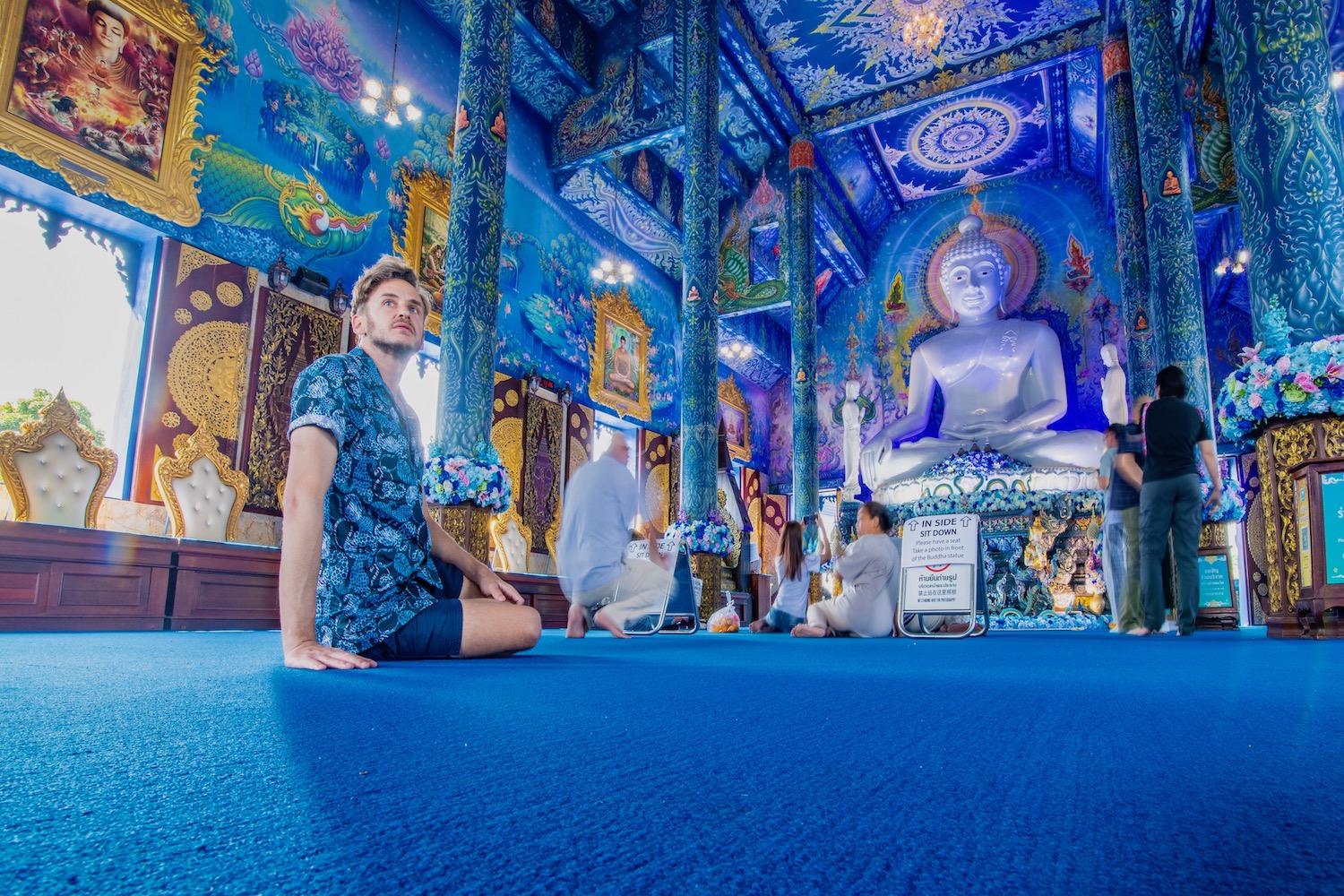
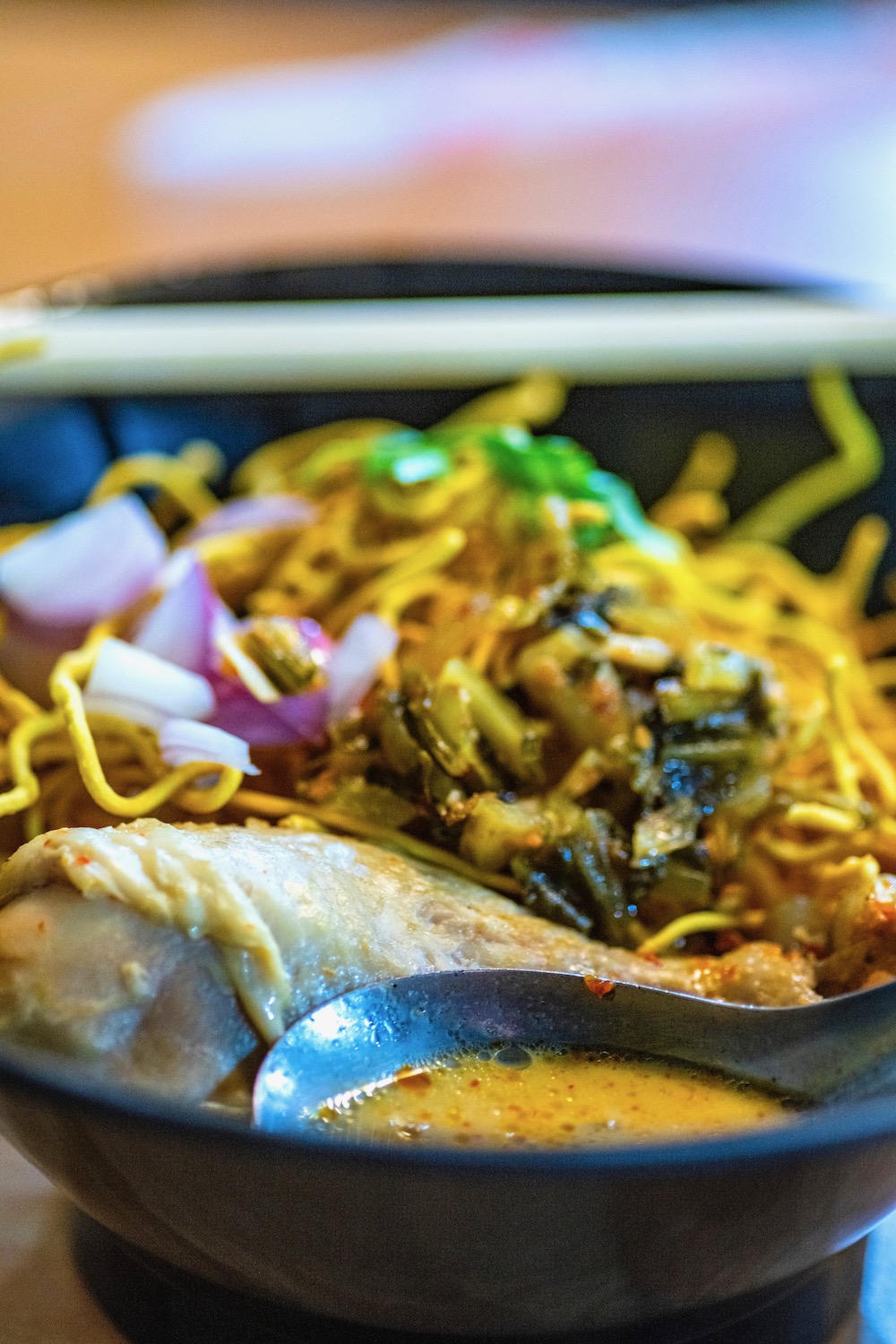
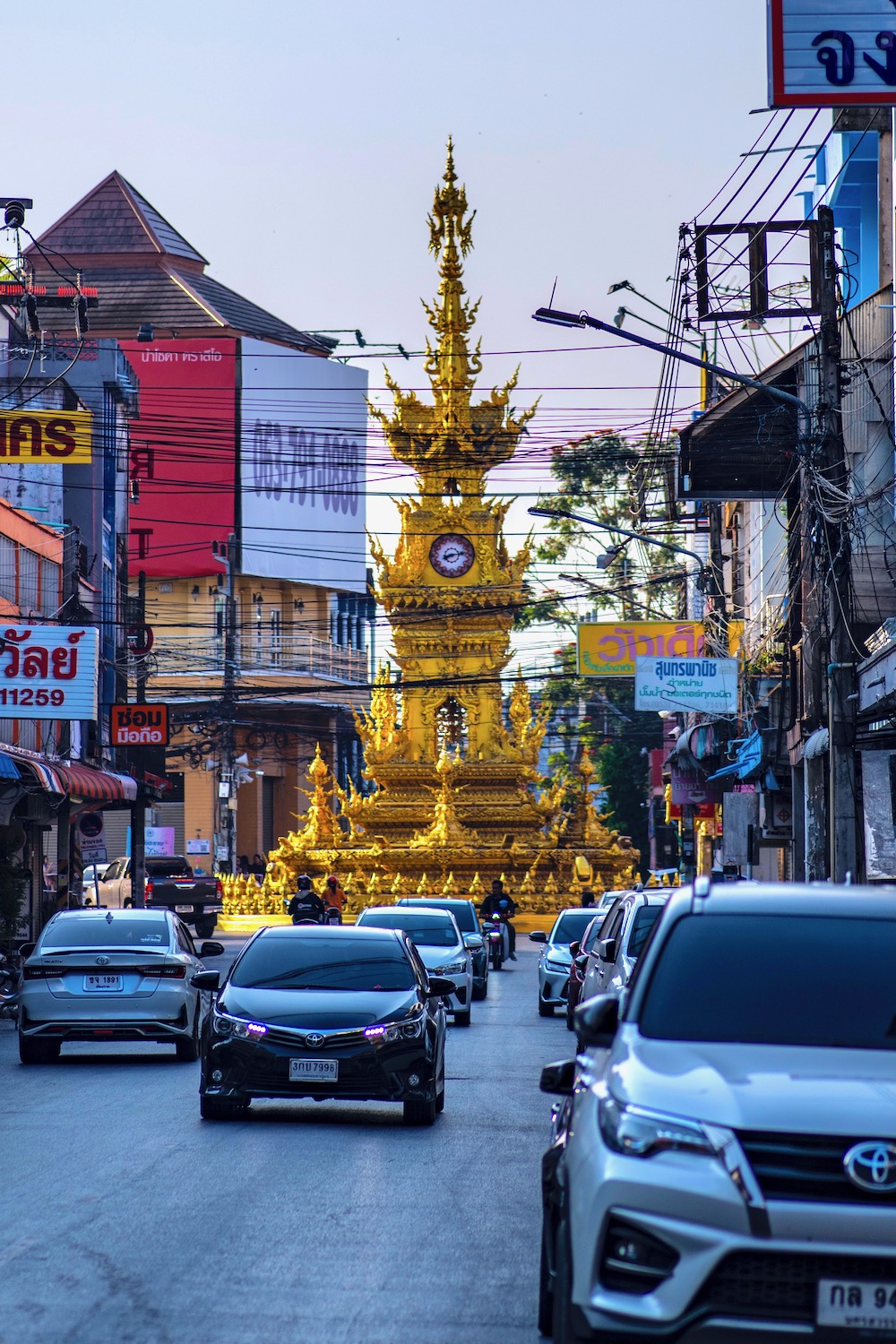
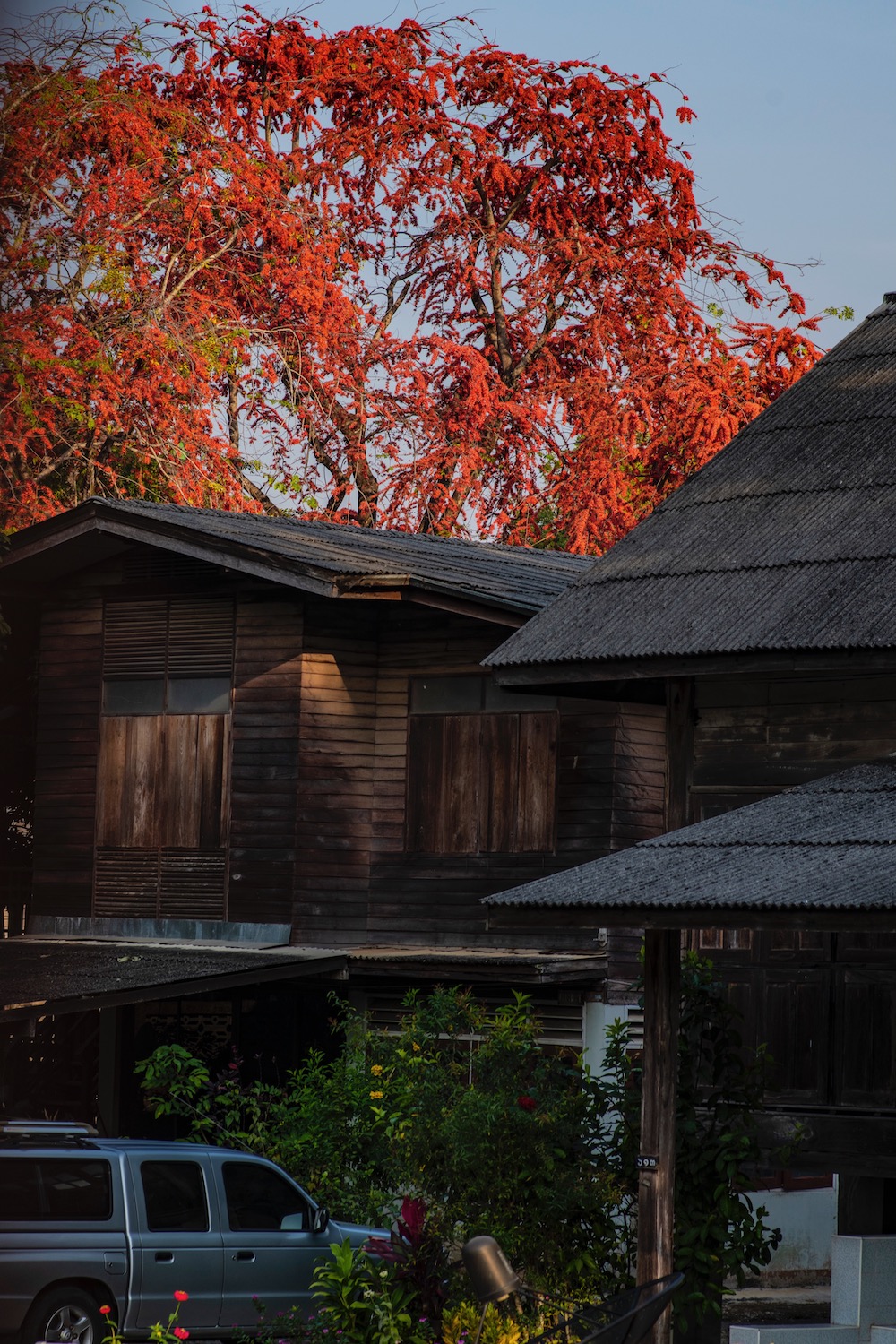
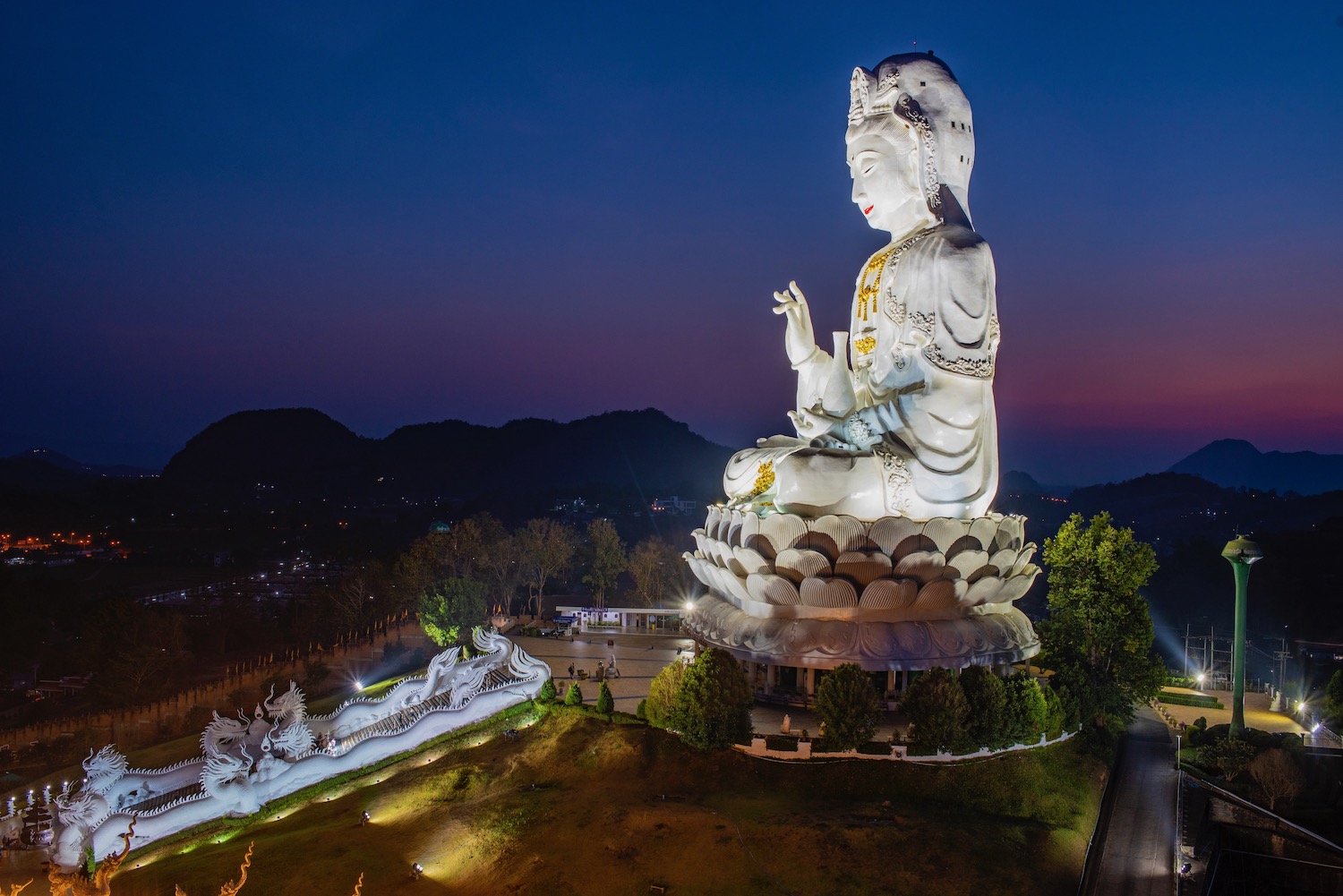
I woke up Friday morning and found that a lot of my questions had been answered—and I’m not talking about the pedantic ones I asked waiting to board the slow boat from Laos to Thailand, or about the finer details of my 2010 trip to Luang Prabang.
The previous evening, I’d watched the sun set behind the mammoth Guan Yin statue at Wat Huay Pla Kang. It was the third time I’d been there, though it was the first time outside of the rainy season. I finally saw the burning orb disappear beneath the hills in the distance, looking out the window og the ninth tier of the nine-tier pagoda just next door to the Lady Buddha (as people something call her—incorrectly).
I thought back to my reticence, not only to have gone through with my Mekong sailing, but indeed on having gone through with this trip up north at all. It would’ve been so easy to stay in my capital cocoon for another week until my flight to Krabi; maybe I would’ve canceled my 12-day swing through the islands as well, and gone back to the US having spent five weeks away from all the people I care about simply to slink around Bangkok as if I still live here.
As I frantically captured the disappearing sun and the wisps of color it left in its wake, not unlike the frenzy I’d gone into watching the alms ceremony days earlier, I realized my answer: Trying; striving; feigning; chasing; running; throwing shit at the wall, and hoping some of it sticks.
I shouldn’t cancel ever again—I should’ve even entertain the idea of quitting, not even for a half-second—because the answer to every question I ask is the same. I will never stop trying to leave my mark, or find my way, or tell my story, no matter how many marks I leave, how many paths I clear with my machete or how many tomes I author. I will never stop—I can never stop.
And alas, I now start moving again, like the slow boat when it sets off every morning, powering upstream against the current.



